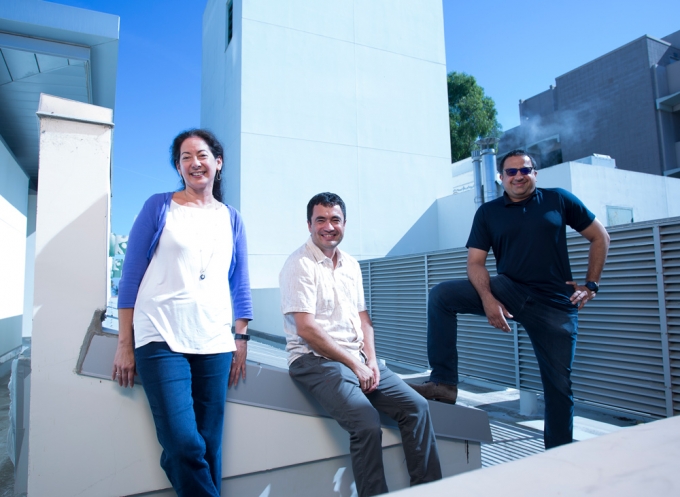A new round of NSF funding is making it possible for UC Santa Barbara to continue for six more years a pair of partnerships supporting diversity and visions of graduate school among materials-science students at two Minority Serving Institutions — the University of Texas, El Paso (UTEP), and Jackson State University (JSU) in Mississippi. This is the third round of funding for Jackson State and the second for UTEP.
The grants are part of the NSF’s Partnerships for Research and Education in Materials (PREM) program, aimed at fostering next-generation materials research by having a team of faculty work with engineering and science students from diverse backgrounds who will, hopefully, go on to earn advanced degrees.
PREM collaborations leverage existing NSF-funded centers at supporting institutions, in this case the Materials Research Science and Engineering Center (MRSEC) at UCSB, aka the Materials Research Laboratory. Student exchanges provide opportunities for undergraduate students at UTEP and JSU to spend the summer doing research with students and engineering and science faculty at the MRSEC. Last summer, several UCSB undergraduate students in chemical engineering also spent time studying photovoltaics at UTEP.
“They have a great program in photovoltaics there, and faculty are really used to working with undergraduates, so they’ve been super mentors for our exchange students,” said MRSEC education director, Dotti Pak.
“At UCSB,” said Professor Ram Seshadri, who is also director of the MRSEC, “we provide training for undergraduate students, who get to work with graduate students and can access instrumentation to run experiments related to their research at Jackson State or UTEP.”
UCSB grad students also talk to visiting prospective graduate students about why they chose UCSB, which inevitably leads to discussions about the possibilities of collaborative work across disciplines.
Seshadri, the PI on both collaborations, is joined by other UCSB faculty: together, the UTEP and JSU groups includes 13 faculty — from Chemical Engineering, Materials, Chemistry & Biochemistry, Mechanical Enineering, Physics, and Biomolecular Science and Engineering.
Among them is chemistry professor Javier Read de Alaniz, diversity coordinator of the UCSB MRSEC, who said, “This partnership has played a critical role in our sustained effort to
increase diversity in STEM at UCSB, as well as at the national level.”
A Move to Diversify STEM Faculty
In a new program, UC Santa Barbara is collaborating with UC Merced, CSU Fresno, and CSU Channel Islands to create and test a model for training and mentoring underrepresented minority doctoral students in science, technology, engineering, and mathematics (STEM) fields, thus leading to increased diversity among STEM faculty. All four universities are recognized Hispanic Serving Institutions.
The National Science Foundation, through its Alliances for Graduate Education and the Professoriate, awarded $2.1 million to fund the project and a research component, in the hope that a model will be developed that can be replicated at other universities nationwide.
“Working with other institutions expands our views of higher education in California and beyond, and gives us a renewed sense of our broader societal mission,” said Carol Genetti, dean of the graduate division at UCSB.
Graduate Division leaders working with co-PIs David Sherman (psychological and brain sciences) and Anne Charity Hudley (linguistics) wrote the project proposal after realizing that, in order to be as prepared as possible, doctoral students who are interested in teaching at colleges and universities need experience and training beyond what they get at their home campuses.
Last summer, doctoral students in science, technology, engineering, math, social sciences, linguistics, and psychology met at UCSB for a workshop on how to teach effectively. In fall, the students were paired with CSU faculty members in their disciplines to co-teach classes on those campuses.
The UC schools will study the psychology behind what drives young doctoral candidates to make their career decisions, such as attending teaching-intensive schools compared to research-heavy institutions.

From left: Dotti Pak, Javier Read de Alaniz, and Ram Seshadri.
